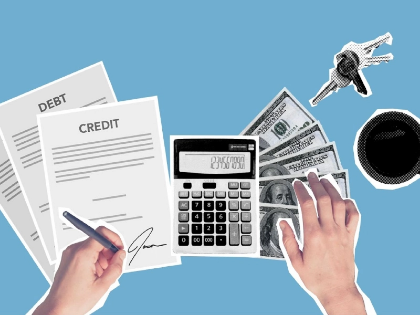The means test computes the difference between your disposable income and the median income in your state. Social Security or disability benefits are not included.
1. Revenue

Finding out if you qualify for bankruptcy requires first figuring out how much money you have available. The bankruptcy means test, which contrasts your income with the state median income for a household of your size, can be used to accomplish this.
The test considers both local and national expense guidelines in addition to your actual expenses. This covers items such as utilities, insurance, groceries, clothing, and your mortgage payment. It does not, however, include luxuries that are unnecessary for survival.
You will also need to put your spouse's salary on the means test if you have one. This is due to the fact that in places where community property exists, both partners are liable for debts acquired during the marriage.
2. Debts

Your average monthly income over a period of six months is compared to the median income for your state and household size in the bankruptcy means test. It also accounts for what you spend. Finding out if your disposable income is low enough to allow you to make partial payments on your unsecured debts is the aim of the means test.
Before filing under Chapter 7 or Chapter 13, a debtor must take part in credit counseling with a nonprofit organization recognized by the U.S. Trustee Program within 180 days. Additionally, debtors have to finish a course on personal finance management.
All assets that debtors own or may one day sell, including real estate and other non-liquid assets, must be disclosed. All of their debts, secured and unsecured, must also be listed. obligations acquired for a company or with the intention of making money, as well as obligations that belong to the community in a state where community property exists, are not deducted from the debtor's available income for the purposes of the means test.
3. Resources

A person filing for bankruptcy must include a list of all the assets they had at the time of the petition. These include material possessions like clothing and instruments for your trade, as well as immaterial assets like land or a second house. Financial assets include deposit accounts and investments. To pay off creditors, nonexempt property is liquidated; this procedure is supervised by a trustee. Certain assets, such retirement savings and specific bank accounts, are not subject to this rule. Others, such as certain types of investment property and high-value collectibles and family heirlooms, are not.
Spouses filing jointly in many states are also required to list common property, which exposes a significant other's assets to creditors. Because of this, it's crucial that you speak with a lawyer to ensure that you are aware of the regulations in your state regarding property ownership and bankruptcy filing. Additionally, a competent lawyer can explain to you how filing for Chapter 7 bankruptcy could be possible without giving up any assets.
4. Income

The means test for bankruptcy establishes if a debtor's income is adequate to pay back unsecured creditors. The starting point for the computation is the median household income in your state for a household of your size. You are eligible to apply for Chapter 7 bankruptcy if your income is less than the median and you pass the means test.
Add up all of your gross revenue from the last six months, including any wages, pensions, rental income, and other regular monthly earnings, to determine your income. Subtract that figure from six. The amount that emerges is your monthly income as of right now.
Subtract your permitted monthly expenses from your income as of right now. In the event that the total comes out lower than the Chapter 7 income ceiling, you are eligible to file for bankruptcy. If the results are favorable, you can still be qualified for Chapter 13 bankruptcy, which enables debt repayment over time. For people who need to make up missed auto or mortgage payments, Chapter 13 is the best option.
Recommended Reading: State Payday Loan Regulations: Important Information
























Builds decisional muscle memory.
Calmly dismantles false urgency.
Creates optional collaboration hooks.
Gentle slope for newcomers.